One of the two pears growing in our garden has yellow spots on the leaves. Apparently this is pear rust. I have never encountered this disease before, I would like to know where rust on pear and apple trees comes from and how to fight this infection?
Vladimir P. Saratov region.
This is what pear rust looks like, photo of leaves affected by this disease:
And these are the leaves of an apple tree with characteristic yellow-orange spots:
Many orchards were left without pears and apples last summer due to rust. The manifestation of this disease cannot be ignored. First, rounded greenish and then yellow-red spots with a crimson border or crimson spots without a border appear on the leaves of the pear. Rust leaves similar signs on apple tree leaves. On quince, cushion-shaped orange-red spots with black dots form on the upper side of the leaves. Cherries, cherries, bird cherry, raspberries, and plums are also affected. Already in mid-July, the leaves fall off, sometimes completely.
Juniper is a bad neighbor for apple and pear trees
The methods for treating rust on apple and pear trees are the same, as is the reason for the appearance of this disease - close (and not so close) proximity to juniper.
The first anti-rust treatment on pear is carried out at the beginning of flowering with chorus, the second - two weeks after flowering. An intermediate link in the development of rust is juniper. When planting juniper and fruit trees close together, rust will settle in your garden for a long time.
In early spring, clean the affected shoots and disinfect them with 5% copper sulfate. Affected foliage must be removed and burned or composted. In the summer, when the first signs of the disease appear, you can treat it 2 more times with Abiga-Pik or Raek.
At the end of summer, clearly visible nipple-like outgrowths form on the underside of the leaves, located in groups and individually. When ripe, the outgrowths (aecidia) open.The spores they contain are released and carried by the wind.
These spores cannot infect either a pear or an apple tree. They germinate and form mycelium on the skeletal branches of Cossack juniper. There she spends the winter. You can notice it: thickenings form on the affected juniper branches. Shoots and skeletal branches die. Wounds, swellings, and swellings form on juniper trunks, especially at the root collar.
In spring, brown outgrowths (teleitospores) appear in cracks in the bark, which swell and become covered with mucus after the first rain. Then basiospores are formed, which are carried by the wind over a radius of 40-50 km and infect pear, apple, plum, and cherry trees.
By the end of July, the leaves of fruit crops are affected and their massive fall begins. This greatly weakens the trees. Spots appear on the fruit near the calyx. Sick fruits are underdeveloped and deformed. Severely affected shoots die.
Treatment of rust on pear and apple trees
Gardeners sometimes begin to sound the alarm at the end of summer, when the deadlines for fighting rust have already passed. If you noticed signs of rust on your trees last season, don't miss the timing of your treatments!
The first spraying with 1% Bordeaux mixture or its substitutes (Abiga-Pik, Khom) or 0.5% polycarbocin (50 g per 10 l of water) is carried out in the “green cone” phase, the second - in the “white bud” phase, the third - immediately after flowering, repeating after 10-15 days.
Copper-containing preparations can be replaced with colloidal sulfur (100 g per 10 liters of water). Good results are obtained by “blue spraying” with 3% Bordeaux mixture before the buds open. It is carried out “through a green cone” instead of 1% Bordeaux mixture.
In early spring, before the buds open, it is necessary to clean the wounds on rust-affected shoots and skeletal branches until they reach healthy wood. Then the wound must be disinfected with copper sulfate (500 g per 10 liters of water) and, after drying, covered with garden varnish.
Severely affected shoots are pruned, taking 5 cm of the healthy part, and skeletal branches - 10 cm - in late February - early March.
For the treatment to be beneficial
To treat rust on pear and apple trees, copper-containing preparations are most often used. However, you must know how to use such preparations correctly, otherwise, instead of benefiting the tree, they can cause harm.
Bordeaux mixture should not be used:
In hot weather Due to strong evaporation, the concentration of the pesticide on the leaves increases, and this can lead to burns. And this is harmful for the gardener - toxic fumes can be swallowed. Therefore, you only need to spray in the morning or evening.
Early in the spring if the temperature is below minus 5 degrees, you cannot spray - you will get zero results from the treatment and burn leaves, fruits, and young shoots.
At high temperature and high humidity, even on old trees, Bordeaux mixture can cause burns. Under these conditions, an excess amount of copper sulfate is released from the Bordeaux mixture.
On leaves, burns from Bordeaux mixture appear in the form of brown spots, dying of the edges of the leaf blade or a thick brown mesh on it: such burns also occur from copper sulfate and copper oxychloride.
In order to prevent burns of leaves on pears when treating rust, copper sulfate, Bordeaux mixture and copper chloride are used more correctly and safely in the early spring, and their substitutes (abiga-pik, cuproxate, etc.) - at a later date.And the land must be protected from excess copper, which has accumulated in large quantities in garden plots.
If spraying is carried out incorrectly (treated in the morning when there was rain or heavy dew), drops of the solution will flow from the foliage to the ground. Therefore, treatment is carried out in the morning after the dew has dried or in the evening. And it should be at least 6 hours before it rains.
If the solution is processed incorrectly (large droplet spray), the spray tip delivers the solution over a short distance (50-60 cm). Not only leaf burns occur, but also premature leaf fall and even the death of young shoots. Burns are visible in the first 2-3 days, and leaf drop appears within a week.
Rust-resistant pear varieties
If you still have the desire to decorate the area with juniper bushes and at the same time grow pears, then you can try planting rust-resistant varieties:
- Summer Williams
- Skorospelka
- Ilyinka
- Vera Ligel
- Vera Boek
- Dekanka autumn
But Clapp's Favorite is very susceptible to this disease.
As for apple trees, they are much more resistant to rust than pears. We have several varieties of juniper growing on our site, and despite this, not a single apple tree has suffered from rust. Unfortunately, the same cannot be said about the pear, from which only a stump and pleasant memories remained.
In addition to rust, trees in the garden can be affected by another very common and dangerous disease - scab. « How to deal with scab on apple and pear trees"
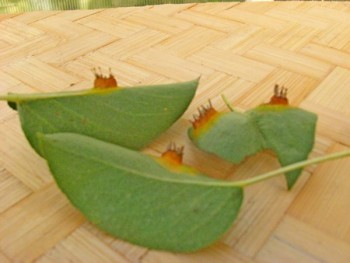
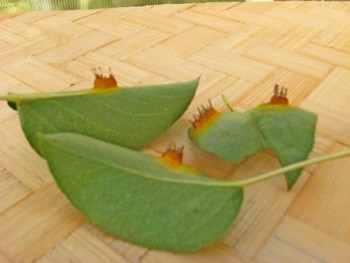
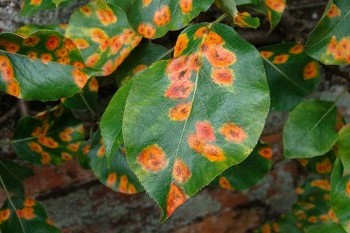
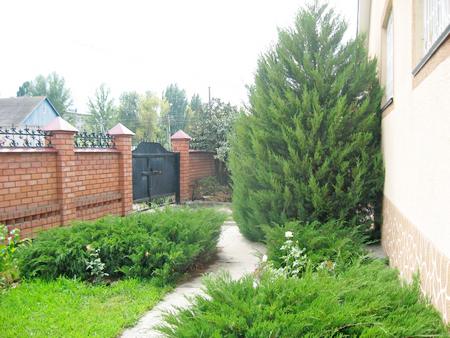
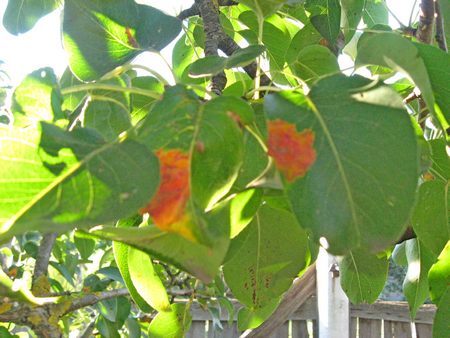
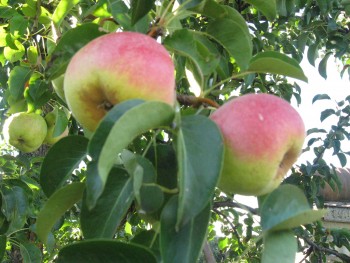

 (3 ratings, average: 4,33 out of 5)
(3 ratings, average: 4,33 out of 5) CUCUMBERS NEVER GET SICK, I'VE BEEN USING ONLY THIS FOR 40 YEARS! I SHARE A SECRET WITH YOU, CUCUMBERS ARE LIKE THE PICTURE!
CUCUMBERS NEVER GET SICK, I'VE BEEN USING ONLY THIS FOR 40 YEARS! I SHARE A SECRET WITH YOU, CUCUMBERS ARE LIKE THE PICTURE! You can dig a bucket of potatoes from each bush. Do you think these are fairy tales? Watch the video
You can dig a bucket of potatoes from each bush. Do you think these are fairy tales? Watch the video
 How our fellow gardeners work in Korea. There is a lot to learn and just fun to watch.
How our fellow gardeners work in Korea. There is a lot to learn and just fun to watch. Eye trainer. The author claims that with daily viewing, vision is restored. They don't charge money for views.
Eye trainer. The author claims that with daily viewing, vision is restored. They don't charge money for views. A 3-ingredient cake recipe in 30 minutes is better than Napoleon. Simple and very tasty.
A 3-ingredient cake recipe in 30 minutes is better than Napoleon. Simple and very tasty. Therapeutic exercises for cervical osteochondrosis. A complete set of exercises.
Therapeutic exercises for cervical osteochondrosis. A complete set of exercises. Which indoor plants match your zodiac sign?
Which indoor plants match your zodiac sign? What about them? Excursion to German dachas.
What about them? Excursion to German dachas.